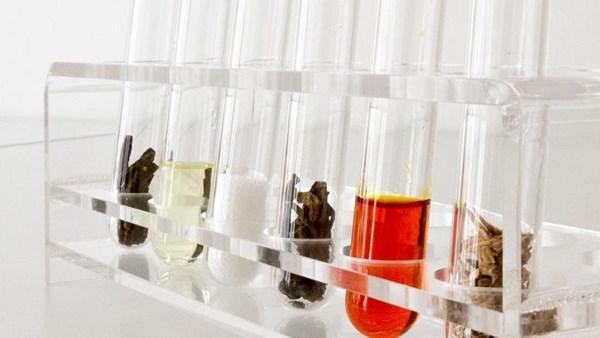Nylon from Wood Industry Waste?
Process can produce nylons from wood cellulose terpenes.
Process can produce nylons from wood cellulose terpenes.
A process developed by the Fraunhofer Institute for Interfacial Engineering and Biotechnology (IGB) can produce high-performance engineering plastics from terpenes—a side stream of the cellulose production from wood. Their new bioplastic and its potential applications will be featured at K 2016 at the Fraunhofer exhibit—booth SC01, Hall 7.
More specifically, the synthesis of nylons from terpenes was developed at BioCat—Bio, Electro and Chemocatalysis, a branch of Fraunhofer IGB. BioCat, headed by professor Volker Sieber, works on techniques for converting terpenes into biosurfactants, biobased epoxides or monomers for biobased nylons with new properties.
Terpenes are hydrocarbons that are typically found as components of softwood, but there are also several other sources in nature including: dandelions, rubber trees, and spices such as aniseed, cloves, nutmeg, cardamom, cinnamon and allspice. Slightly volatile terpenes, referred to as essential oils, can be derived from the peel of citrus fruits during the manufacture of orange juice of tinned fruit.
The BioCat researchers first aimed to develop a bioplastic that is like nylon 6. Synthesized from the terpene 3-caren, this novel nylon is said to be significantly more transparent than nylon 6, making it suitable for new and high-quality applications, such as the production of ski goggles or visors of helmets. According to project manager Harald Strittmatter, it will also be possible to manufacture coatings, textiles and adhesives from the biobased nylon.
The Fraunhofer researchers are driven to work with terpenes because they are a renewable resource that is generated in large quantities as byproducts in the pulp and fruit industries.
“As a waste stream, the application of terpenes for the production of new bioplastics is in conflict with the need for food production for humans and animals…similar compounds are only accessible from fossil resources with great effort,” said Strittmatter.
For the synthesis of nylons, terpenes have to be modified: via an oxidation step, a so-called carbonyl group is introduced, which can be converted into a lactam—a monomer building block of nylons.
The process’s benefits: this synthetic route of producing terpene-based lactams is shorter and, more importantly, combines bio- and chemo- catalytic reaction steps, which allow avoidance of harmful regions. Until now, these bioplastics have been manufactured only in the laboratory but the research team plans to develop a route which will allow for commercial-scale production.

Related Content
-
Blend Amorphous PHA with PLA to Improve injection Molded Part Properties
Adding aPHA to PLA can boost a range of mechanical properties and expedite composting. Here are the details as well as processing guidelines for injection molding the blends.
-
At NPE2024, Follow These Megatrends in Materials and Additives
Offerings range from recycled, biobased, biodegradable and monomaterial structures that enhance recyclability to additives that are more efficient, sustainable and safer to use.
-
Avantium and U.S.’s Origin Materials Aim to Accelerate Production of FDCA and PEF
The partnership aims to bring together both companies’ technology platforms to produce FDCA from sustainable wood residues on an industrial scale.
















